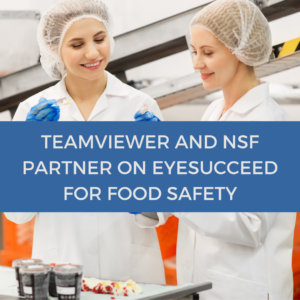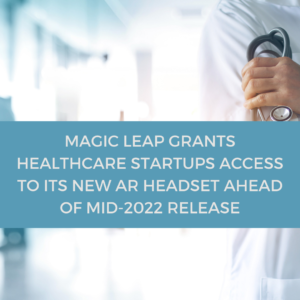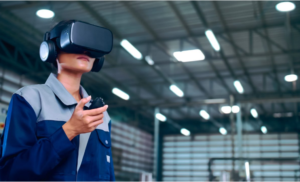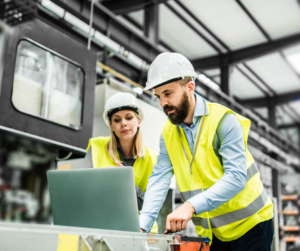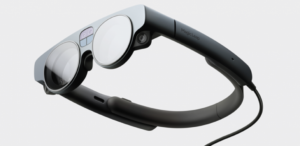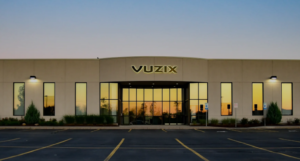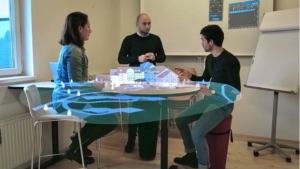Over the course of 2021, Big Tech went all in on immersive collaboration and anticipation certainly grew for a game changing XR device (or two) from Apple. 2021 was also the year of the word ‘Metaverse,’ which we see as any immersive world where you might have your next team meeting or interact with brands. Let’s see what the major players in enterprise XR unveiled and acquired this year:
AUGMENTED/MIXED REALITY
MICROSOFT
Microsoft’s activities this year made it clear the company is focusing on collaborative XR and, more generally, the future of work. In March, Microsoft announced Mesh, a new platform for building multi-user XR apps or shared virtual experiences connecting people in different locations. Mesh will be brought into Microsoft Teams in 2022, allowing colleagues to meet as avatars in mixed reality.
META (FORMERLY FACEBOOK)
Facebook rebranded as Meta in 2021 in a PR move to distance the company from controversy, or as leadership claims, to convey the company’s new aim of building the metaverse. Meta also made its AR entrance with a pair of glasses developed in collaboration with Ray-Ban. The company’s 10-year plan for AR, however, is much more ambitious, as revealed in a blog post from Facebook Reality Labs. This includes developing its own operating system for AR and a mixed reality headset code named Project Cambria.
On the VR front, Meta is eyeing the enterprise market: In addition to rebooting its business tools for the consumer Oculus Quest 2, Facebook surprise launched Horizon Workrooms in August, a VR meeting app for remote collaboration, and just this month released its latest avatar system to all Unity developers. If Meta’s intentions aren’t clear enough, nearly a fifth of its employees are now working on AR/VR. (Pay attention to the competition between Meta and Microsoft for top virtual collaboration solution in 2022.)
GOOGLE and CISCO
Both Google and Cisco made moves to make existing video meeting apps more immersive: In July, Google Meet became available to all Google Workspace customers on the Glass Enterprise Edition 2. A few months later, Cisco unveiled Webex Hologram. Cisco says its photorealistic, real-time holograms – as opposed to Meta’s avatars – make virtual meetings more realistic and engaging. In other Google news, new job listings recently revealed the giant’s plans to create a new “Augmented Reality OS” for an unspecified “innovative AR device” intended to reach “billions.”
MAGIC LEAP
Magic Leap has been hard at work on its next-gen headset Magic Leap 2, which is set to debut in 2022 and already being used by select partners through an early access program. Here’s what we know about the upcoming enterprise-focused device: Magic Leap 2 is reportedly half the size and 20% lighter than its predecessor, with a doubled field of view and 3-4x the processing power. Meant to be an “all day, every day” device, additional improvements include improved color fidelity, text legibility, and image quality. Magic Leap also raised $500 million in new capital this year.
LENOVO
In 2021, Lenovo introduced its ThinkReality A3 glasses: The Industrial Edition tethers to a smartphone via USB-C for use in manufacturing, energy, and engineering, while a PC Edition is geared more towards office workers. Lenovo also certified the RealWear HMT-1 for its ThinkReality platform, and announced it will offer RealWear’s HMT-1 family of devices through its global sales network.
Notable Mentions
IRISTICK revealed its Visor Ex-01 smart glasses for hazardous areas in 2021, while Vuzix introduced Vuzix Shield, its first binocular AR smart glasses. Campfire raised $8 million, as well, to build an integrated hardware and software platform partially on the bones of failed startup Meta. In July, the company announced it’s working on holographic collaboration.
VIRTUAL REALITY
PICO
2021 was a good year for Pico, which raised $37 million and launched its next-gen headsets. The Pico Neo 3 Pro and Neo 3 Pro Eye (which includes Tobii eye tracking tech) are priced at $700 and $900 respectively, undercutting both Oculus and HTC.
HP
HP’s Reverb G2 Omnicept Edition, first announced in September 2020, became available in May. Priced at $1,250, the headset provides a wealth of data that can enhance training applications, with sensors for tracking eye movement, pupil size, facial expressions, and heart rate. (Watch HP’s Elias Stephan speak about the Omnicept Edition at EWTS 2021).
HTC
HTC launched two VR headsets in the Spring, along with pro tools for enterprise. The $1,300 HTC Vive Focus 3 is a business headset with 5k resolution, spatial audio, a 120-degree field of view, and new controllers. HTC also unveiled Vive Business, a suite of tools for applications like training, meetings, design reviews, and more.
VARJO
In June, Varjo unveiled its Reality Cloud platform, which allows you to scan a room and share it in photorealistic detail with someone remotely in near real time (essentially teleportation). Varjo Aero, a $2,000 pared down version of Varjo’s XR-3 headset for smaller businesses and wealthy enthusiasts, arrived in October; and Varjo showcased Varjo Lab Tools with which users can bring parts of the real world into VR. In addition, a VR training solution by Varjo and VRM Switzerland became the first to receive approval from the European Union Aviation Safety Agency, allowing pilots to earn credited training hours in virtual reality.
SOFTWARE
Remote Collaboration: Arvizio revealed Immerse 3D for iOS, Android, HoloLens, and Magic Leap, allowing users to interact simultaneously with the same 3D model in AR, for instance, during collaborative meetings on Microsoft Teams, Zoom, etc.
Easier AR: Scope AR lowered the bar for AR creation in enterprise with WorkLink Create, a browser-based AR platform enabling industrial professionals to author 3D content without coding.
Expanding footprint: TeamViewer acquired Upskill in 2021 and announced a partnership with Google Cloud to co-develop and market AR solutions built on Google Cloud. Assisted Order Picking is the first jointly developed solution, leveraging Google Glass Enterprise Edition 2 and TeamViewer’s Frontline solution.
PTC & Matterport: In April, PTC announced Vuforia Engine Area Targets. With support from Matterport, Leica 3D scanners, and NavVis’ indoor mobile mapping systems. Area Targets allows users to create digital twins of large spaces (think factories, malls, etc.). The integration of Matterport with PTC’s Vuforia platform can enrich enterprise applications such as wayfinding, virtual training, and real-time information retrieval.
Eye tracking: With eye tracking becoming the standard for next-gen VR headsets, WorldViz announced both Vizard 7, a platform for academic research and professional applications that integrates with over 150 VR devices, and SightLab VR, a drag-and-drop tool allowing anyone to set up and run eye tracking experiments in VR.
QUALCOMM & NVIDIA
Among other 2021 highlights, Qualcomm revealed Snapdragon Spaces XR Developer Platform, a kit to help developers build head-worn AR experiences. (As of November, Lenovo’s ThinkReality A3 glasses are the only supported hardware.) Competitor NVIDIA expanded its Omniverse platform allowing designers and reviewers to work together in real time in a virtual world. Available through a $9,000 annual subscription plan, NVIDIA hopes Omniverse will deliver the foundation for the metaverse…at least in enterprise.
____
In summary:
– Apple glasses rumors
– Mark Zuckerberg’s philosophical musings about the future of social and work
– The Metaverse
But really, pay attention to the remote collaboration space in 2022, which will likely be the first mainstream metaverse application in enterprise; and get excited for upcoming headsets like Magic Leap 2 and a return to San Diego for the Augmented Enterprise Summit 2022 (formerly EWTS).
